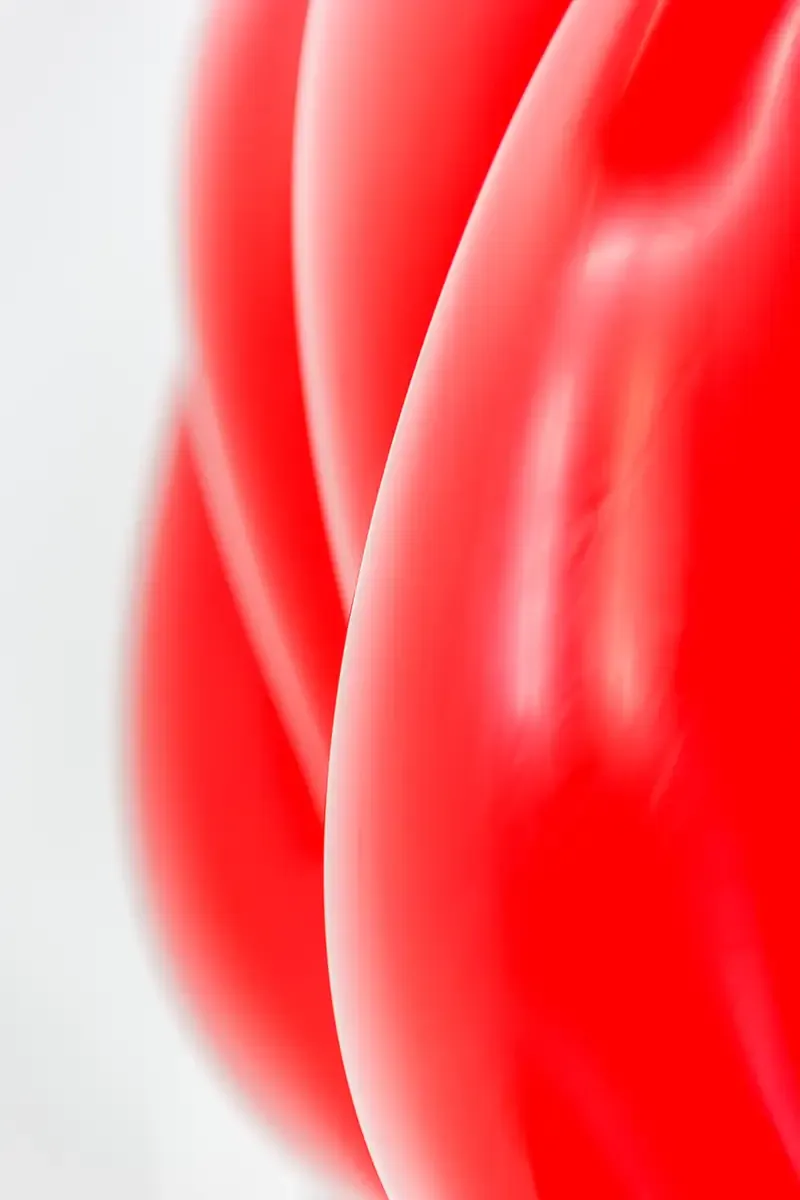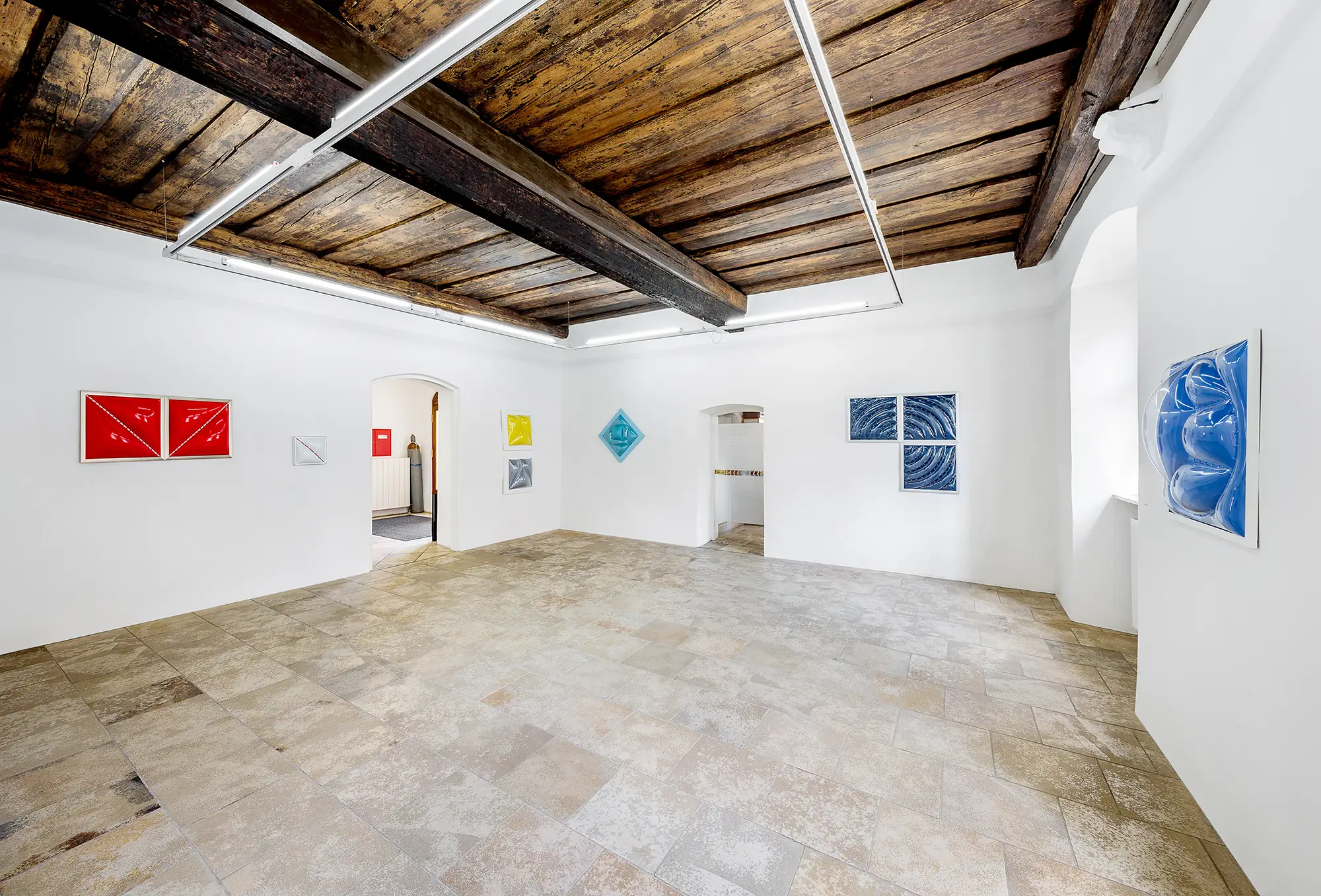Under Pressure: Johannes Steininger's Artistic Philosophy
In the vibrant world of contemporary art, Austrian artist Johannes Steininger stands out as a pioneering figure whose work defies traditional categorization.

Born on June 26, 1977, in Linz, Austria, Steininger has carved a niche in the art scene with his unique blend of sculpture, painting, inflatable-art and sound art.
This article explores Steininger's artistic journey, his philosophy, and his groundbreaking works that continue to captivate art enthusiasts, fellow artists, collectors, and curators alike.
Artistic Career
Johannes Steininger's path to becoming an acclaimed artist began with his early interest in the arts, which led him to pursue a rigorous education in space- and designstrategies at the University of Art in Linz.

His academic endeavors extended next to the Berlin University of the Arts, UdK, and Steininger's peripheral creativity led him to the Technical University Berlin Institute of Acoustic Field Theory, where he developed a deep understanding of acoustic- and auditiv architecture, minimal arts, and sculpture.



These diverse academic studies have significantly impacted his artistic output, integrating art disciplines and physical precision with aesthetic fluid.
Philosophical Underpinnings
Steininger’s artistic philosophy is deeply rooted in his interdisciplinary background.

His work explores the dynamic interplay between form, material, and sound within spatial contexts. The artist himself states:
As a contemporary Austrian artist, my goal is to expand the boundaries of sculpture in the 21st century, inspired by the widespread use of synthetic materials characteristic of the Petro-modern era.
This philosophy isn't merely a declaration of purpose but is vividly manifested in his inventive utilization of materials like soft vinyl (Polyvinyl chloride, PVC), which he shapes into intricate, air-filled sculpture-paintings.
These creations challenge and redefine the core of traditional sculpture while pushing the boundaries of painting.


Johannes Steininger: Detail left No.: BLC1609-01 / Detail right No.: RBL0204-2 | Image B.Klammer
By transforming this everyday material into complex sculptures, Steininger re-contextualizes its industrial and commercial connotations, inviting viewers to reconsider its aesthetic and functional potentials.
The Essence of Material and Technique
A significant aspect of Steininger's work is his choice of materials, which are not only a medium but a message.

By employing industrially produced soft vinyl, he comments on the consumer and synthetic nature of modern society.
His techniques, including tracing and high-frequency embossing, enable the creation of distinctive textures and forms that transform industrial materials into intricate art pieces.


Johannes Steininger: The Art Collectors View, Artwork left No.: CfBBBL2507 right No.: OGLFH2404 | Image Courtesy by the Artist
These methods not only enhance aesthetic appeal but also highlight his expertise with his chosen materials, bridging the gap between industrial production and fine art.
Hybrid Forms and the Role of Air
Steininger’s sculptures are celebrated for their ability to blur the lines between painting and sculpture.

His hybrid "Air-Sculptures" and "Soft-Sculptures" (also known as Sculpture-Paintings) go beyond traditional sculpture by integrating visual elements commonly associated with painting, such as compositional layering and color dynamics, into three- dimensional forms.

Air, a central element in his work, is used to inflate and create these sculptures, giving them a life-like presence that challenges viewers’ perceptions of volume and space. The artist explains:
Through the use of air, each sculpture becomes an ethereal representation of this element, reflecting my connection to avant-garde movements like Spatialism and the Zero Group.
Sound as a Sculptural Element
Perhaps what most distinctively sets Steininger apart in the contemporary art landscape is his integration of sound into his sculptural works, using the omnipotent medium for sound, air.

His scholarly exploration in the realm of acoustic field theory has empowered him to utilize sculptures as acoustic treatment components that dynamically modify the sonic attributes of their surroundings.
This acoustic dimension introduces an additional layer of interaction, wherein the sculptures not only inhabit space but also actively reshape their auditory environment.
Each hybrid object derives its objecthood from the introduced inflated internal air pressure, which manifests as undulating worlds on the plastic canvas and resonates with the surrounding sound.
Steininger not only produces artistically innovative artworks but is also a developer and inventor, including the creation of an inflatable electret condenser microphone called SUPER.SONIC.AIR.EAR.

Exhibitions and Global Recognition
Steininger’s innovative approach has been showcased in numerous exhibitions worldwide, making him a significant figure on the international art scene.

Noteworthy exhibitions include his 2019 solo show at the Luftmuseum in Amberg, titled 'Lineare Buckelarbeiten,' where he displayed more than 69 of his objects, and his participation in the Ars Electronica Festival in Linz, which highlighted both his visual and soundart projects.


Johannes Steininger: NOTAGALLERY, Artworks: left RGBL0503 + RGBL0603, right: No. BL2104 + No. BL2504 | Image Courtesy by the Artist
These exhibitions demonstrate his ability to engage a diverse audience, from art critics to cultural enthusiasts, and underscore his role as a bridge between various art forms and sensory experiences.
Impact and Future Directions
As an educator at the University of Art in Linz, Steininger is also shaping the next generation of artists, imparting his knowledge and passion for art that transcends traditional boundaries.

His active participation in Upper Austria's independent art scene, including events like the Theater Festival for Young Audiences SCHÄXPIR and Communale oö 2023, alongside his presence in the Kunstsammlung des Landes Oberösterreich in Linz, strengthens his impact within the art world.
This ensures that his pioneering approach remains a source of inspiration and innovation within the contemporary art scene.
Conclusion
Johannes Steininger’s work is a clear demonstration of art's power to innovate and inspire.
Through his unique blend of materials, techniques, and philosophic inquiry, he continues to redefine the limits of sculpture and sound art.


Schlossmuseum Linz: Johannes Steininger at Kunstsalon 2023 Artworks: left No.: D302WBB0110, right No.: D302WBB0210, NEURA- FATI -201 with Base and No.: CfBBBL2507 | Image Courtesy by the Artist
For collectors and curators, Johannes Steininger is an appealing choice that offers a new perspective in the contemporary art world.
His visionary art not only sets the tone for current trends but also expands the boundaries of what art can achieve in terms of form, attaining a new sense of purpose and crossover concept, ultimately contributing to shaping our society.

Johannes Steininger Website
As Steininger’s career progresses, the art world eagerly anticipates his next contributions to the evolving dialogue.
Follow the Johannes Steininger on Instagram.

Johannes Steininger On Artsy
Johannes Steininger, born on June 26, 1977, in Linz, Austria, is a contemporary artist renowned for his innovative "Soft-Sculptures" and "Air-Sculptures."
Educated at the University of Art in Linz and further refined through studies in Berlin, Steininger blends sculpture, sound art, and design in his artworks.
His pieces often feature materials like soft vinyl, transformed through techniques such as high-frequency embossing to create dynamic, interactive forms that challenge traditional boundaries between sculpture and painting.
Steininger also incorporates sound elements that alter the acoustic properties of spaces, enhancing the sensory experience of his installations.
He is a prominent figure in the Austrian art scene, with works displayed in international exhibitions and collections, and currently teaches at the University of Art in Linz.











Member discussion